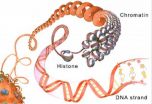(Press-News.org) Older parents frequently give help to their middle-aged offspring, and their perceptions about giving this help may affect their mental health, according to a team of researchers.
"We usually view the elderly as needy, but our research shows that parents ages 60 and over are giving help to their children, and this support is often associated with lower rates of depression among the older adults," said Lauren Bangerter, Ph.D. student in human development and family studies, Penn State.
The team -- which included researchers at Penn State, the University of Texas at Austin and the University of Michigan -- examined the association between the support that aging parents give to their middle-aged offspring, the parents' perception of this support as rewarding or stressful and the parents' levels of depressive symptoms.
Specifically, the researchers evaluated 337 older-parent participants of The Family Exchanges Study. As part of The Family Exchanges Study, the participants rated how frequently they provided different types of support to their adult children.
Bangerter and her colleagues grouped support into two general types -- tangible and nontangible. Tangible support included practical support and financial assistance, such as fixing something around the house, running an errand, providing a ride, giving or loaning money and helping to purchase goods, services, insurance or education. Nontangible support included emotional support, companionship, talking about daily events and giving advice.
Next, the team assessed depressive symptoms of parents, using a 53-item self-report scale, which measures depressive symptoms commonly observed in everyday settings. Parents rated to what extent they felt lonely, blue, worthless, hopeless about the future or had no interest in things.
The results appear in the current issue of The Gerontologist.
The researchers found significant interactions between tangible support and feelings of reward, and between nontangible support and feelings of stress in explaining parents' depressive symptoms.
In particular, the team's results suggest that parents who view giving as highly rewarding report higher levels of depressive symptoms when they give low amounts of tangible support, and lower levels of depressive symptoms when they give high amounts of tangible support. In contrast, parents who do not view giving as highly rewarding report higher levels of depressive symptoms when they give high amounts of tangible support, and lower levels of depressive symptoms when they give lower amounts of tangible support.
"Although past research shows that giving support declines with age, our data show that parents frequently provide both tangible and nontangible support to their grown children," said Steven Zarit, Distinguished Professor of Human Development and Family Studies. "In addition, our results suggest that depressive symptoms are more frequent when the level of reward a parent feels regarding giving is inconsistent with the amount of tangible support that he or she actually gives."
INFORMATION:
The National Institute of Aging, the MacArthur Network on Transitions to Adulthood and the Eunice Kennedy Shriver National Institute of Child Health and Human Development supported this research.
Other authors on the paper include Kyungmin Kim, postdoctoral fellow and Karen Fingerman, professor of human development and family studies, University of Texas at Austin; and Kira Birditt, research assistant professor, University of Michigan.
Parents' attitudes about helping their grown children affect their mental health
2014-02-24
ELSE PRESS RELEASES FROM THIS DATE:
Specialized cognitive therapy improves blood sugar control in depressed diabetes patients
2014-02-24
Although maintaining good blood sugar control is crucial for avoiding complications of diabetes, it has been estimated that only about half of patients are successful in meeting target blood glucose levels. The prevalence of depression among diabetes patients – up to twice as high as in the general population – can interfere with patients' ability to manage their diabetes. Now a group of Massachusetts General Hospital (MGH) investigators report that a program of cognitive behavioral therapy that addresses both mood and diabetes self-care led to improved blood sugar control ...
Almost 200 new species of parasitoid wasps named after local parataxonomists in Costa Rica
2014-02-24
An inventory of wild-caught caterpillars, its food plants and parasitoids, has been going on for more than 34 years in Area de Conservación Guanacaste (ACG), a protected area of approximately 1200 km2 in northwestern Costa Rica. As a result, more than 10,000 species of moths and butterflies are estimated to live in ACG. Their caterpillars are in turn attacked by many parasitoid wasps, also numbering thousands of species. However, most of those wasps have never been described and remain unknown.
For the past few years researchers from Canada, Costa Rica and the United ...
New technology detect cellular memory
2014-02-24
Cells in our body are constantly dividing to maintain our body functions. At each division, our DNA code and a whole machinery of supporting components has to be faithfully duplicated to maintain the cell's memory of its own identity. Researchers at BRIC, University of Copenhagen, have developed a new technology that has revealed the dynamic events of this duplication process and the secrets of cellular memory. The results are published in Nature Cell Biology.
In 2009, two women at BRIC, University of Copenhagen joined forces to develop a new technology that could elucidate ...
Researchers make the invisible visible
2014-02-24
The 2003 development of the so-called hyperpolarization technique by a Danish research was a groundbreaking moment that made it possible to see all the body's cells with the help of a new contrast agent for MRI scans. Researchers from Aarhus have now taken another big step towards understanding the body's cells and with it also the development of diseases:
"With the hyperpolarization method, sensitivity to specific contrast agents is up to 10,000 times higher than with a traditional MRI scanning. What we have now documented is that with the hyperpolarization MRI scanning ...
Team converts sugarcane to a cold-tolerant, oil-producing crop
2014-02-24
CHAMPAIGN, Ill. — A multi-institutional team reports that it can increase sugarcane's geographic range, boost its photosynthetic rate by 30 percent and turn it into an oil-producing crop for biodiesel production.
These are only the first steps in a bigger initiative that will turn sugarcane and sorghum – two of the most productive crop plants known – into even more productive, oil-generating plants.
The team will present its latest findings Tuesday (Feb. 25) at the U.S. Department of Energy's ARPA-E Energy Innovation Summit in Washington, D.C.
"Biodiesel is attractive ...
Pointing is infants' first communicative gesture
2014-02-24
VIDEO:
Catalan researchers have studied the acquisition and development of language in babies on the basis of the temporary coordination of gestures and speech. The results are the first in showing...
Click here for more information.
Catalan researchers have studied the acquisition and development of language in babies on the basis of the temporary coordination of gestures and speech. The results are the first in showing how and when they acquire the pattern of coordination ...
The chemistry of Sriracha: Hot sauce science
2014-02-24
WASHINGTON, Feb. 24, 2014 — Forget ketchup and mustard — Sriracha might be the world's new favorite condiment. Beloved by millions for its unique spicy, garlicky, slightly sweet flavor, the chemistry of "rooster sauce" is the subject of the American Chemical Society's latest Reactions video. The video is available at http://youtu.be/U2DJN0gnuI8.
INFORMATION:
Subscribe to the series at Reactions YouTube, and follow us on Twitter @ACSreactions to be the first to see our latest videos.
The American Chemical Society is a nonprofit organization chartered by the U.S. ...
Uninsured adolescents and young adults more likely to be diagnosed with advanced cancer
2014-02-24
ATLANTA – February 24, 2014 – A new American Cancer Society study shows that uninsured adolescents and young adults were far more likely to be diagnosed with late-stage cancer, which is more difficult and expensive to treat and more deadly, compared to young patients with health insurance. The study, published early online, will appear in the March issue of the journal CANCER.
The study's authors says their data suggest a way forward for cancer control efforts in the adolescent and young adult (AYA) population, a group that has benefited the least from recent progress ...
Creating animated characters outdoors
2014-02-24
This news release is available in German.
So far, film studios have had to put in huge amounts of effort to set monsters, superheroes, fairies or other virtual characters into real feature film scenes. Within the so-called motion capturing process, real actors wear skintight suits with markers on them. These suits reflect infrared light that is emitted and captured by special cameras. Subsequent to this, the movements of the actors are rendered with the aid of software into animated characters. The most popular example of this is "Gollum" from the film Lord of the ...
Nanotracer tester tells about wells
2014-02-24
A tabletop device invented at Rice University can tell how efficiently a nanoparticle would travel through a well and may provide a wealth of information for oil and gas producers.
The device gathers data on how tracers – microscopic particles that can be pumped into and recovered from wells – move through deep rock formations that have been opened by hydraulic fracturing.
Drilling companies use fracturing to pump oil and gas from previously unreachable reservoirs. Fluids are pumped into a wellbore under high pressure to fracture rocks, and materials called "proppants," ...






